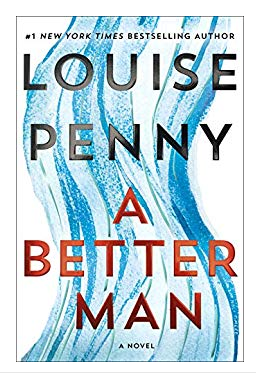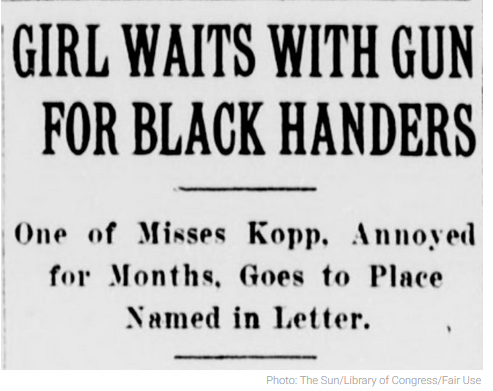Caroline Carlson received attention for writing good books for kinds 9 – 12. I am an eclectic reader and enjoy discovering new books for juvenile readers as well as YA books. The cover of The World’s Greatest Detective makes the book look old.
That choice of cover fits with the story because it is set in a time when people rode in carriages and on trains rather than in automobiles and airplanes.
Tobias, Toby, Montrose, is an orphan. His parents leave Toby with his Aunt Janet, mother of six children of her own, while they take a vacation at the seaside. Unfortunately, his parents disappear on that trip, leaving Toby at age eight an orphan.
At first, Toby stays with Aunt Janet, a woman whom Toby has never heard laugh. She does, however, check his fingernails for dirt. At first, the extended family decides Toby should stay with Aunt Janet. Soon, though, Aunt Janet sends Toby to Uncle Francis who owns a hotel and restaurant.
Uncle Francis becomes quickly impatient with Toby who is after all only eight. When Uncle Francis tires of Toby, he sends the boy to Aunt Ingrid who owns and operates a bakery. But that placement does not work out either and Toby finds himself with Cousin Celeste who works in a hospital.
The next relative who takes Toby is Uncle Howard, a horse stable owner. Uncle Howard quickly sends Toby to Grandfather Montrose; sadly, Grandfather Montrose dies soon after Toby arrives. Thus, the last relative is Uncle Gabriel Montrose, a private investigator who lives on Detectives’ Row.
Now, Aunt Janet has warned Toby that if he cannot make himself amenable enough to stay with Uncle Gabriel, Toby will be sent to an orphanage where he will eat gruel because Uncle Gabriel is THE LAST RELATIVE. Toby is not sure what gruel is, but he does not like the sound of it. As a result, Toby does his best to be of use to Uncle Gabriel, to keep his fingernails clean, and to be on his best behavior.
As one might expect, Detectives’ Row has a number of detectives living and working there along with Uncle Gabriel. Miss Flossie Price and Miss Anthea March are PIs who live near Toby’s uncle. Julia Hartshorn is another PI who works alone. The elderly PI, Mr. Rackham, is also a member of Detectives’ Row. The most famous detective of Detectives’ Row, however, is Hugh Abernathy.
Now, Toby is well acquainted with Mr. Abernathy because of Sphinx magazine which details Mr. Abernathy’s expertise in detective work. Much like Dr. Watson and Sherlock Holmes, Mr. Abernathy is the famous sleuth and Mr. Peartree writes up the stories for Sphinx. Toby is fascinated with the stories and waits eagerly for each issue to arrive.
Toby describes Mr. Abernathy who “wasn’t young any longer, but he was more heroic than ever, and he lived with his assistant, Mr. Peartree, in a tall white house at the easternmost end of the Row.”
Upon his arrival at Detectives’ Row, Toby becomes his uncle’s assistant, particularly filing away paperwork on cases and dusting the desk. He would like to become a real detective himself.
When Uncle Gabriel, whose business is failing, receives an invitation from Mr. Abernathy to participate in a contest to determine the World’s Greatest Detective and win $10,000, Toby becomes excited. Uncle Gabriel, however, refuses to take part in the contest. As luck would have it, Uncle Gabriel is going on a trip to find information on a case he has been working. He arranges with Mrs. Satterthwaite, his cook, to stay with Toby until Uncle Gabriel’s return.
Toby seizes his chance and enters his uncle’s name in the contest, determined that he will go to Coleford Manor where the contest will take place and solve the mystery so he can win the $10,000 for his uncle and also be named the World’s Greatest Detective.
On Detectives’ Row, Toby sees a girl about his age with a small dog in tow. She tells him she is a murderess in training and that her mother and grandmother are both murderers.
Uncle Gabriel leaves Toby at home thinking Mrs. Satterthwaite will be along soon. Uncle Gabriel does not know that Toby has sent Mrs. Satterthwaite a note saying he will be staying with Aunt Janet. Toby’s plan is in full-swing as he heads to Coleford Manor. He tells Mr. Peartree that Uncle Gabriel will enter the manor through the back door and will stay in his room to do his detecting. He does not want the other detective contestants to see him.
At Coleford Manor, Toby encounters the girl and dog again. The girl is Ivy Webster, and Coleford Manor is her home. Her dog is Percival. Her parents are the hosts for Mr. Abernathy’s contest. Miss March, Miss Price, Miss Hartshorne, Mr. Rackham, and Mr. Philip Elwood are the sleuths along with Toby, of course, who are participating in the contest. Mr. Abernathy and Mr. Peartree are also at the manor. Ivy’s parents, Mr. and Mrs. Webster and their older daughter Lillie are also in the home.
Toby and Ivy must discover if all the people in Coleford Manor are who they claim to be. Is there an imposter in the group? If so, who can it be?
Toby quickly learns that the detective course he purchased by mail with his last coins is operated by none other than Ivy Webster. Ivy, too, wishes to be a detective. The two squabble over territory until they finally decide to join forces and work together although Ivy is continues to be strong-willed and difficult at times.
Mr. Abernathy has planned a murder mystery with the person not actually being murdered, but the detectives must determine who has committed the pretend murder. Then, of all things, dear readers, guess what happens? A real murder, you say? Well, of course, you are correct.
The biggest surprise is that the murder victim is none other than Mr. Abernathy himself. Now, what will happen? Who can be the murderer? Everyone in the house becomes a suspect. Ivy and Toby look for clues everywhere and listen for any tidbits that will help them solve the case.
They learn that Mr. Abernathy is not a nice man at all; he has many enemies. Thus, the number of people who might wish him harm is large. Ivy and Toby must put the clues together and solve the mystery and yet keep one another safe since a real murderer is on the loose.
The World’s Greatest Detective offers readers an opportunity to figure out the clues along with Ivy and Toby. The writing is crisp and lively. The story moves along quickly. Readers will enjoy the give and take between Toby and Ivy as they work to solve the mystery.
In addition to The World’s Greatest Detective, Caroline Carlson has written The Very Nearly Honorable League of Pirates, a trilogy. She has also published The Door at the End of the World. Carlson has an MFA in Writing for Children from Vermont College of Fine Arts. Find out more about her at her Web site: https://carolinecarlsonbooks.com/.






























